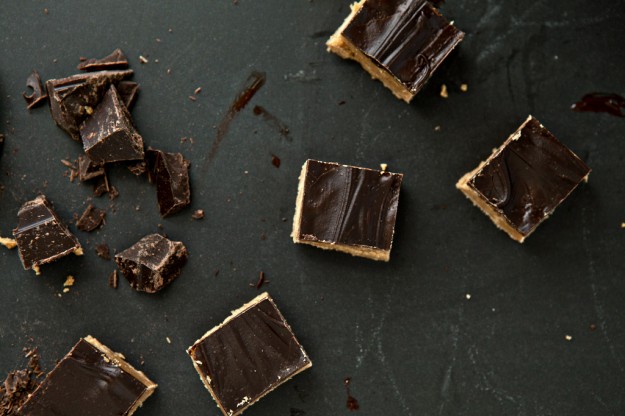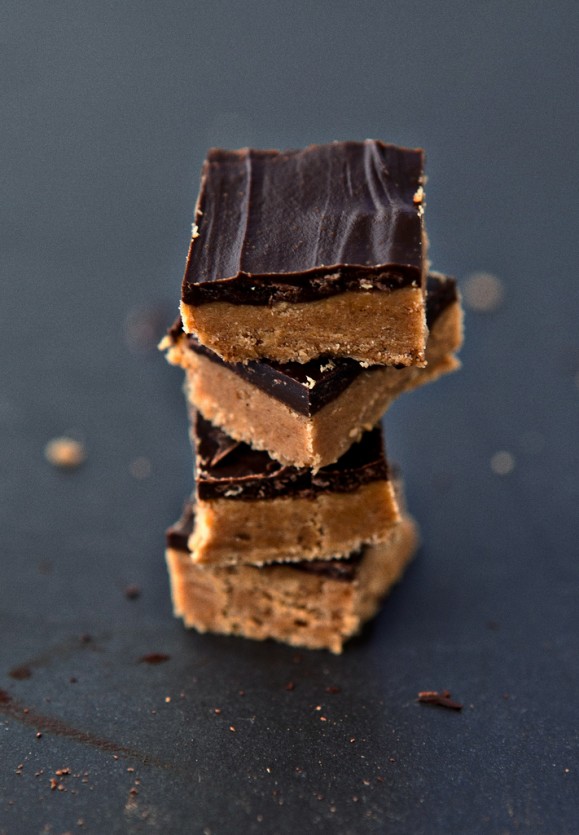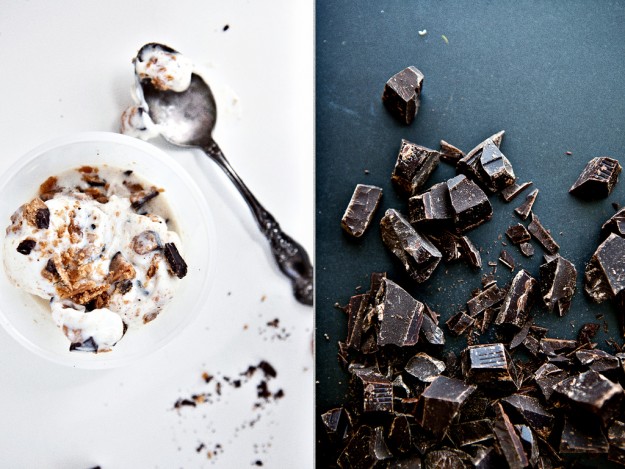Tequila Peach Pie

I asked her to teach me her secret to making pie. Grandma was after all the bringer of pie to all family functions so of course I thought to learn from her. I wasn’t a foreigner in the often intimidating land of pie making as my mother frequently gifted us children with pie. The process of incorporating cold butter into flour didn’t seem to frighten her so I too wasn’t scared. But Grandma’s pies were different. So tender not even a sharp knife could cleanly slice through it, instead victims of the pressure of the knife lay in the bottom of the pie plate in the form of sweet crumbs. I considered it my duty to claim those crumbs with my fingers as their liberator and my mouth their new home.
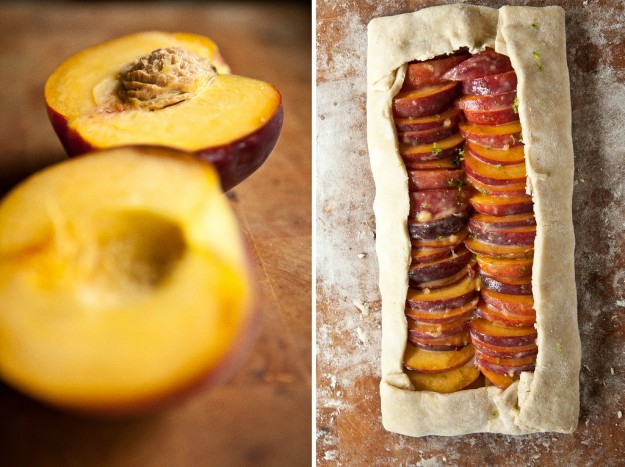
She gathered her ingredients; flour, salt, sugar, milk, and oil. OIL?! No butter, I repeat, no butter. A coffee cup was her measuring cup and it was sometimes filled to the top, other times not. Once all the ingredients were added she mixed it with her hands using her years of experience to determine if she needed “more of this or that”. She was reluctant to offer up a recipe as it was the “feel” of it that was a better judge than precise measurements. What emerged from the oven just over an hour later was a perfect pie just as Grandma always makes.
I find Grandma’s method of baking so comforting. Grandma doesn’t find herself in debates over how she measures flour, she just bakes. She has gifted people with pie, I imagine, no less than a thousand times. Her church, our family and her friends have all had the pleasure of enjoying her impossibly tender crust. It is Grandma’s experience that guides her baking.
While there is no arguing that baking is a science I find that often all the discussion of the preciseness necessary in baking can scare people away from actually attempting to form a dough. Experience is often the best teacher, as is the case with baking. If you, like me, had a mother who enjoyed baking and did so often in the home, than most likely that fear is minimal. But if you didn’t I can understand that there is fear in the unknown. Let me also assure you that there will be failed attempts. Happens to me still. There are at any moment many factors at play working towards the success of your baked good. Sometimes things happen that you simply don’t have an answer for.
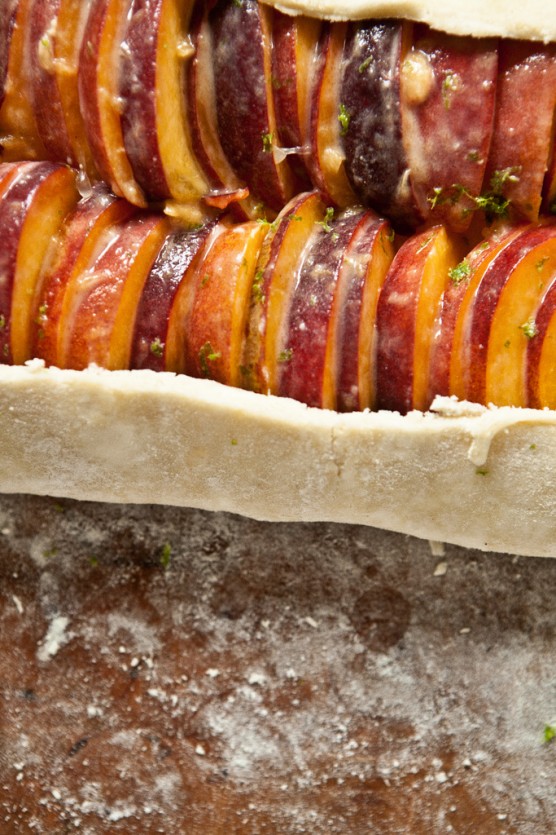
What I often tell my baking students is that the key to successfully baking is a basic understanding of your ingredients. Get to know them and how they interact with one another. This knowledge will allow you to be in control rather than having the recipe control you. When taking this approach baking becomes more closely related to cooking than you think. The freedom and creativity found in baking opens up when you are able to predict what would happen if you use oil in the dough instead of butter, or egg instead of water, for example.
The best book I can recommend for this idea is Rhulman’s Ratio. It boils down the basics of baking into simple ratios. Following the simple ratio you can alter and add to it with great comfort and ease.
Most important is to simply get in the kitchen and start building your experience. As in life, there are many lessons to be learned in our failures. Learn from it and move on. Each attempt will be less and less intimidating and before you know it you will be the bringer of pie as Grandma is.
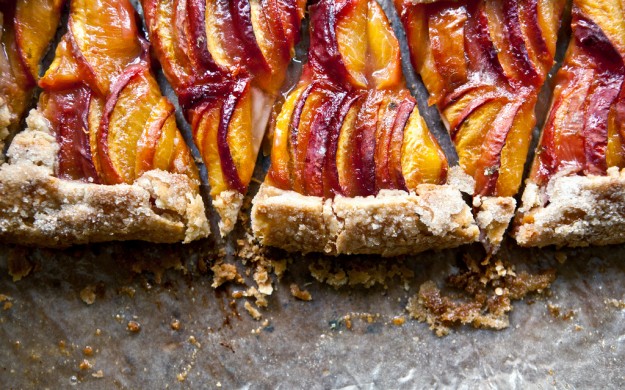
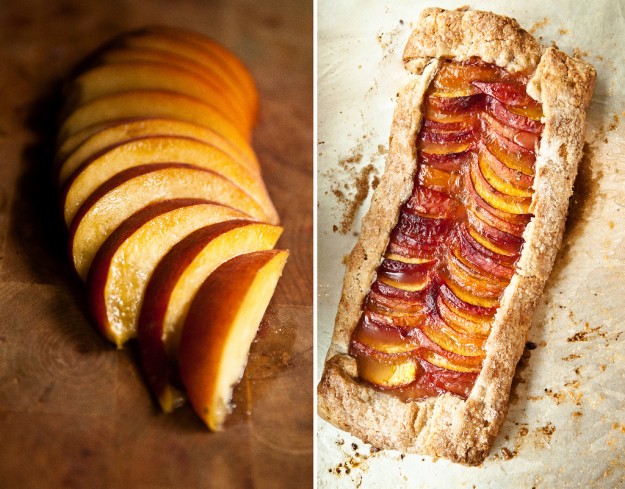
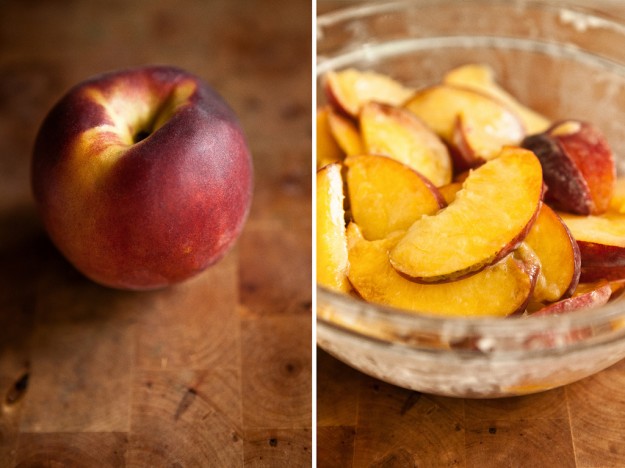
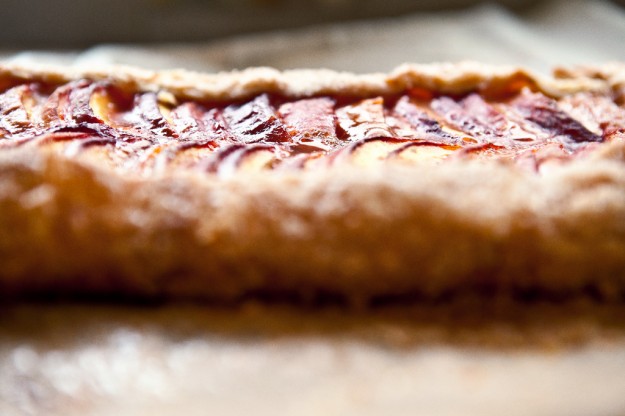
This post is part of the #pieparty!! It started on Twitter and the rest is history. You may have noticed that food bloggers around the web are going pie crazy today. Check out some of these beauties.
Garrett makes a stunning Blueberry pie with Thyme and honey.
Helene’s stunning mixed berry pie with Lemon Verbena
Irvin made a blood orange lemon vanilla shaker pie
Hannah made a peach blueberry pie and it looks darn good
Justin made a Chocolate Bourbon pie and tells how I invited myself along to the pie party
Check out the pie party details at GlutenFreeGirl.com and see our Facebook page.
—
Tequila Peach Galette
You may think I'm crazy making a match like Tequila and peaches but I assure you it's a winner. I happened upon the pair when they were both sitting on my counter. I picked both of them up and smelled them together and the rest is history, or it's pie at least.
Galette Dough
This isn’t Grandma’s dough but it is a sturdy one that is more flaky than tender, making it the perfect choice for a free-form pie. It’s hardy crunch and buttery flakes are a welcomed contrast in texture and flavor to the almost jam-like peaches.
1 ½ cups (7 ounces, 200 grams) all-purpose flour
1 stick + 1 tablespoon (4 ½ ounces, 125 grams) butter, cold
1 tablespoon cornstarch
¼ teaspoon kosher salt
1 egg
1 teaspoon vinegar (such as champagne or cider)
1 tablespoon water, cold
Combine the flour, cornstarch and salt in a food processor. Pulse to combine. Cut the cold butter into rough ½” cubes. Scatter on top of the flour and pulse just a couple of times to evenly disperse the butter. In a small bowl, stir together the egg, vinegar and water. While streaming the liquids in pulse the machine. The dough will appear very crumbly. Once the liquid has been incorporated squeeze the mixture in your hands and if it holds together you are set. If not, sprinkle with a few more drops of water and pulse a couple more times.
Dump out the dough and form into a rough disc. Wrap in plastic wrap and chill in the fridge for at least 30 minutes.
Tequila Peaches
1 ½ tablespoons tequila (I used Hornitos)
1 tablespoon fresh lime juice
½ teaspoon lime zest
1 tablespoon cornstarch
2 large peaches, ripe and fragrant
2 tablespoons sugar
1 tablespoon heavy cream
Combine the tequila, lime juice and cornstarch in a small bowl. Slice the peaches about ¼” thin. In a medium bowl add the peaches and the juice/cornstarch mixture. Using your hands, toss to combine.
Pre-heat the oven to 385* You want to start with a nice hot oven to make sure your butter in the dough, quickly comes to a boil creating steam that puffs up the dough - this is the magic of flakes. Hot oven plus cold butter equals beautiful flakes.
Once the dough has chilled roll out to your desired size. Don’t worry about being neat, in my opinion pies are best when they are rustic and rough. Roll out the dough to ¼” thickness. Place the dough on a parchment lined sheet tray so you don’t have to awkwardly transfer the galette once assembled (can you tell I’m speaking from experience here?) Arrange the peaches or simply dump them in the center of your dough. Leave 1 ½ inches surrounding the peaches and fold this up on top of them pleating as you fold so that it securely encases the fruit. Brush the top of the crust with cream and sprinkle the sugar over the crust and the fruit. Scatter the zest on top of that. Chill the galette in the freezer for 15 minutes before baking.
Bake for 45 minutes to 1 hour. If the crust starts to color too quickly before the juices have begun to boil then simply turn the oven down to 350*. You will be able to tell your pie is done with the crust is a deep golden color and the juices have bubbled and look thicker than boiling water and more like bubbling jam.
Remove from the oven and let sit for at least two hours before enjoying.
